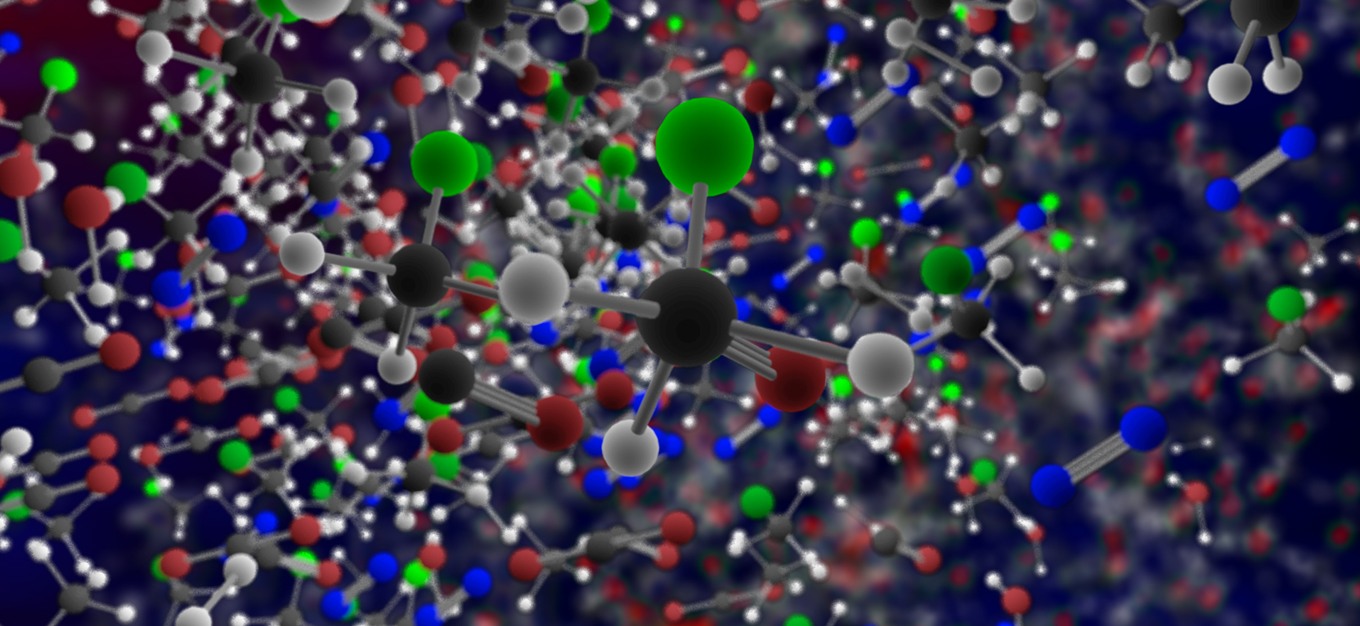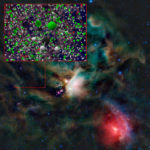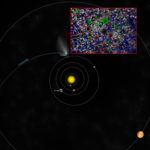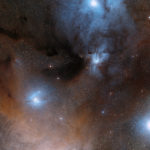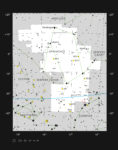ALMA and Rosetta Detect Organohalogens in Two Distant Places in Space
Observations made with the Atacama Large Millimeter/submillimeter Array (ALMA) and ESA’s Rosetta mission, have detected the faint molecular fingerprint of methyl chloride in gas, a chemical commonly produced by industrial biological processes on Earth, around both an infant star and a comet. Methyl chloride (CH3Cl), also known as Freon-40, is one of a class of molecules known as organohalogens, which are formed by organic processes on Earth. But, this is the first ever detection of them in interstellar space, dashing hopes molecule could point to life on other planets.
Indeed, this discovery suggests that organohalogens may not be as useful markers of life as had been hoped by astrobiologists, who previously suggested searching for methyl chloride in the atmospheres of alien worlds as a possible indicator of life. However, these molecules may be significant components of the material from which planets form. This result, which appears in the journal Nature Astronomy, underscores the challenge of finding molecules that could indicate the presence of life beyond Earth.
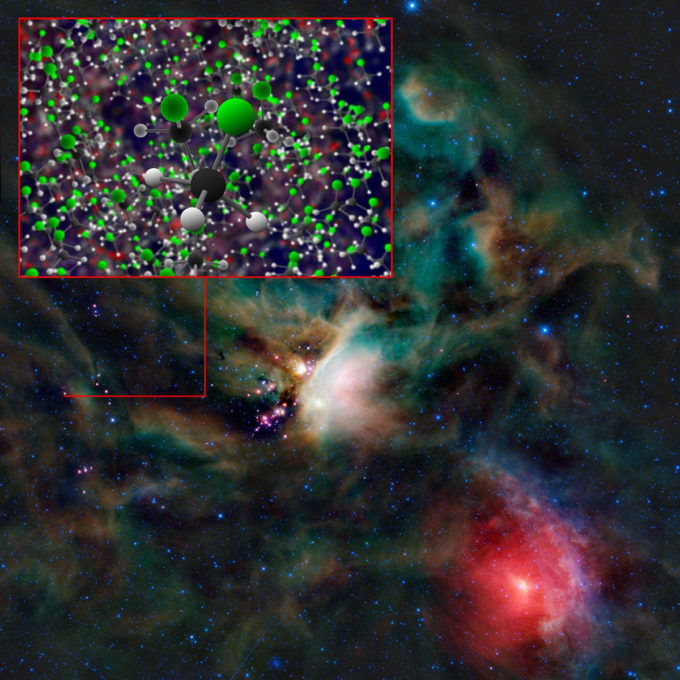
Organohalogen methyl chloride discovered by ALMA around the infant stars in IRAS 16293-2422. These same organic compounds were discovered in the thin atmosphere surrounding 67P/C-G by the Rosetta space probe. Credit: B. Saxton (NRAO/AUI/NSF).
Using data captured by ALMA in Chile and from the ROSINA instrument on ESA’s Rosetta mission, a team of astronomers has found faint traces of methyl chloride, around both the infant star system IRAS 16293-2422 [1], about 400 light-years away, and the famous comet 67P/Churyumov-Gerasimenko (67P/C-G), in our own Solar System. The new ALMA observation is the first detection ever of an organohalogen in interstellar space [2].
Organohalogens consist of halogens, such as chlorine and fluorine, bonded with carbon and sometimes other elements. On Earth, these compounds are created by some biological processes, in organisms ranging from humans to fungi, as well as by industrial processes such as the production of dyes and medical drugs [3].
The discovery of one of these compounds, methyl chloride, in places that must predate the origin of life, can be a disappointment, as earlier research had suggested that these molecules could indicate the presence of life.
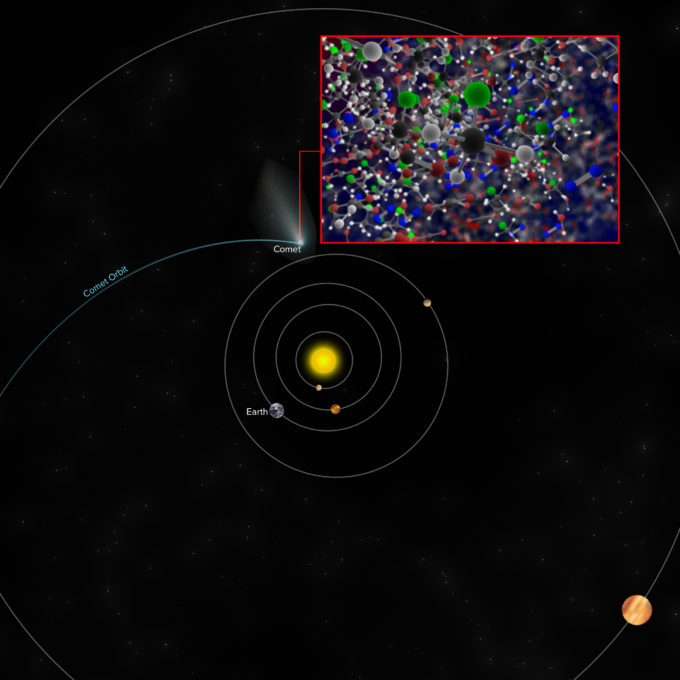
Approximate location of comet 67P/C-G when the Rosetta space probe discovered traces of methyl chloride -- the same molecule detected by ALMA around the IRAS 16293-2422 star-forming region. Credit: NRAO/AUI/NSF.
“Finding the organohalogen Freon-40 near these young, Sun-like stars was surprising,” said Edith Fayolle, a researcher with the Harvard-Smithsonian Center for Astrophysics in Cambridge, (Massachusetts, USA), and lead author of this new paper. “We simply didn't predict its formation and were surprised to find it in such significant concentrations. It’s clear now that these molecules form readily in stellar nurseries, providing insights into the chemical evolution of planetary systems, including our own.”
Exoplanet research has gone beyond the point of finding planets (more than 3000 exoplanets are now known) to looking for chemical markers that might indicate the potential presence of life. A vital step is determining which molecules could indicate life, but establishing reliable markers remains a tricky process.
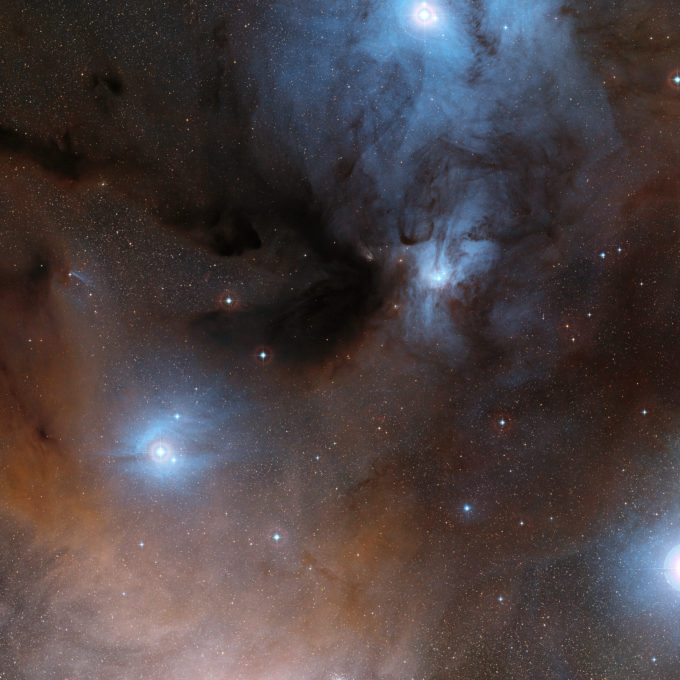
ALMA and Rosetta Detect Freon-40 in Space - Organohalogen methyl chloride (Freon-40) discovered by ALMA around the infant stars in IRAS 16293-2422. These same organic compounds were discovered in the thin atmosphere surrounding Comet 67P/C-G by the ROSINA instrument on ESA's Rosetta space probe. Credit: B. Saxton (NRAO/AUI/NSF).
“ALMA’s discovery of organohalogens in the interstellar medium also tells us something about the starting conditions for organic chemistry on planets. Such chemistry is an important step toward the origins of life,” adds Karin Öberg, a co-author on the study. “Based on our discovery, organohalogens are likely to be a constituent of the so-called ‘primordial soup’, both on the young Earth and on nascent rocky exoplanets.”
This finding suggests that astronomers may have had things around the wrong way; rather than indicating the presence of existing life, organohalogens may be an important element in the little-understood chemistry involved in the origin of life.
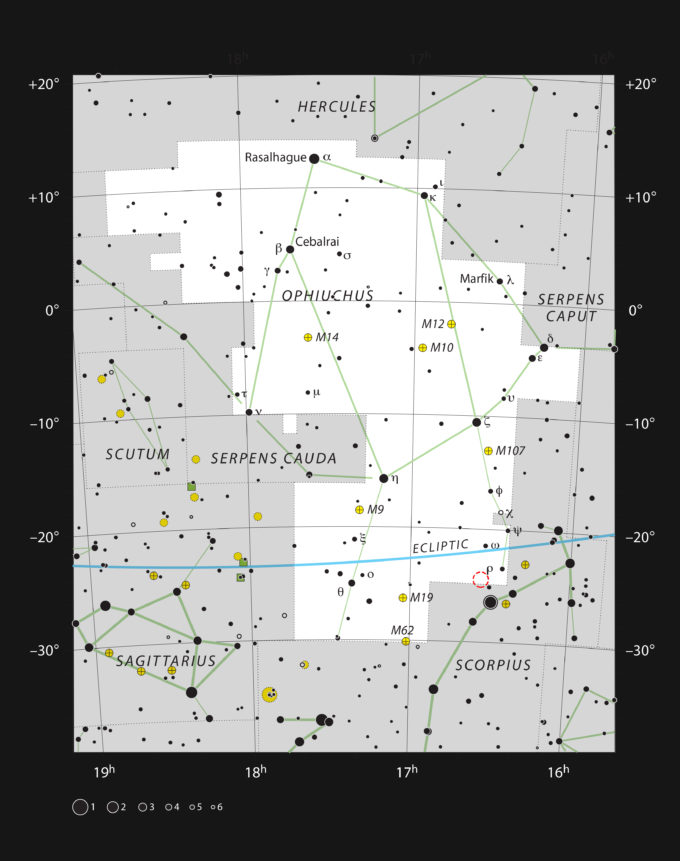
This chart shows the location of the Rho Ophiuchi star formation region in the constellation of Ophiuchus (The Serpent Bearer). The star Rho Ophiuchi, which gives the region its name, is marked with the Greek letter rho (ρ). The position of IRAS 16293-2422, a young binary star with similar mass to the Sun, is marked in red. Credit: ESO, IAU and Sky & Telescope.
Co-author Jes Jørgensen from the Niels Bohr Institute at the University of Copenhagen adds: "This result shows the power of ALMA to detect molecules of astrobiological interest toward young stars on scales where planets may be forming. Using ALMA, we have previously found simple sugars and precursors to amino acids around different stars. The additional discovery of Freon-40 around Comet 67P/C-G strengthens the links between the pre-biological chemistry of distant protostars and our own Solar System."
ALMA can function as an interstellar chemical analyzer by detecting the faint radio signals emitted naturally by molecules in space. Each molecule has a distinctive fingerprint, or series of spikes, in the radio spectrum. It takes incredibly sensitive instruments like ALMA to tease out the telltale of the signal of molecules like methyl chloride. The Rosetta spacecraft could detect it in the atmosphere of comet 67P/C-G using the onboard instrument known as the Rosetta Orbiter Spectrometer for Ion and Neutral Analysis (ROSINA).
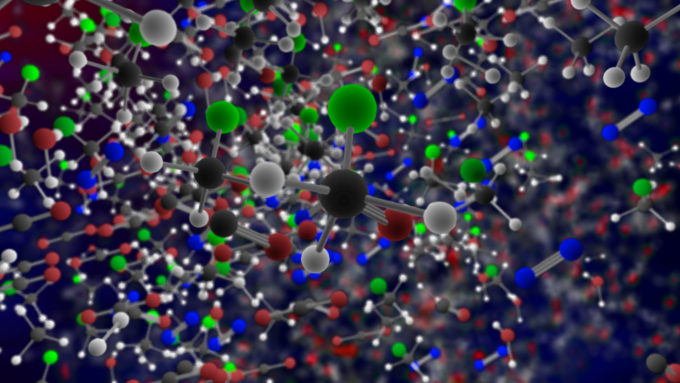
Organohalogen methyl chloride (Freon-40) discovered by ALMA around the infant stars in IRAS 16293-2422. These same organic compounds were discovered in the thin atmosphere surrounding Comet 67P/C-G by the ROSINA instrument on ESA's Rosetta space probe. Credit: B. Saxton (NRAO/AUI/NSF).
“ROSINA was able to capture some of the molecules around the comet, separate them by mass, and count them with exquisite precision,” said Kathrin Altwegg with the University of Bern (Switzerland), and Principal Investigator of ROSINA. “This highly sensitive instrument enabled us to detect a host of the chemicals around the comet, including the one also discovered by ALMA, far from our Solar System.”
The astronomers also compared the relative amounts of Freon-40 that contain different isotopes of carbon in the infant star system and the comet and found similar abundances. The results support the idea that a young planetary system can inherit the chemical composition of its parent star-forming cloud and opens up the possibility that organohalogens could arrive on planets in young systems during planet formation or via comet impacts.
“Our results show that we still have more to learn about the formation of organohalogens,” concludes Fayolle. “This does, however, raise the question: How much of the comet’s organic content is directly inherited from the early stages of star formation? Additional searches for organohalogens around other protostars and comets need to be undertaken to help find the answer.”
Molecule in space and comet
Notes
[1] This protostar is a binary star system surrounded by a molecular cloud in the Rho Ophiuchi star-forming region, which makes it an excellent target for ALMA’s millimeter/submillimeter view.
[2] The data used were from the ALMA Protostellar Interferometric Line Survey (PILS). This survey aims to chart the chemical complexity of IRAS 16293-2422 by imaging the full wavelength range covered by ALMA in the 0.8-millimeter atmospheric window on very small scales, equivalent to the size of the Solar System.
[3] Freon was widely used as a refrigerant (hence the name) but is now banned as it has a destructive effect on the Earth’s protective ozone layer.
Additional information
This research was presented in a paper “Protostellar and Cometary Detections of Organohalogens” by E. Fayolle et al., to appear in Nature Astronomy on 2 October 2017.
The team is composed of Edith C. Fayolle (Harvard-Smithsonian Center for Astrophysics, USA), Karin I. Öberg (Harvard-Smithsonian Center for Astrophysics, USA), Jes K. Jørgensen (University of Copenhagen, Denmark), Kathrin Altwegg (University of Bern, Switzerland), Hannah Calcutt (University of Copenhagen, Denmark), Holger S. P. Müller (Universität zu Köln, Germany), Martin Rubin (University of Bern, Switzerland), Matthijs H. D. van der Wiel (The Netherlands Institute for Radio Astronomy, The Netherlands), Per Bjerkeli (Onsala Space Observatory, Sweden), Tyler L. Bourke (Jodrell Bank Observatory, UK), Audrey Coutens (University College London, UK), Ewine F. van Dishoeck (Leiden University, The Netherlands; Max-Planck-Institut für extraterrestrische Physik, Germany), Maria N. Drozdovskaya (University of Bern, Switzerland), Robin T. Garrod (University of Virginia, USA), Niels F. W. Ligterink (Leiden University, The Netherlands), Magnus V. Persson (Onsala Space Observatory, Sweden), Susanne F. Wampfler (University of Bern, Switzerland) and the ROSINA team.
The Atacama Large Millimeter/submillimeter Array (ALMA), an international astronomy facility, is a partnership of the European Organisation for Astronomical Research in the Southern Hemisphere (ESO), the U.S. National Science Foundation (NSF) and the National Institutes of Natural Sciences (NINS) of Japan in cooperation with the Republic of Chile. ALMA is funded by ESO on behalf of its Member States, by NSF in cooperation with the National Research Council of Canada (NRC) and the Ministry of Science and Technology (MOST) in Taiwan and by NINS in cooperation with the Academia Sinica (AS) in Taiwan and the Korea Astronomy and Space Science Institute (KASI).
ALMA construction and operations are led by ESO on behalf of its Member States; by the National Radio Astronomy Observatory (NRAO), managed by Associated Universities, Inc. (AUI), on behalf of North America; and by the National Astronomical Observatory of Japan (NAOJ) on behalf of East Asia. The Joint ALMA Observatory (JAO) provides the unified leadership and management of the construction, commissioning and operation of ALMA.
Contacts
-
Nicolás Lira
Education and Public Outreach OfficerJoint ALMA Observatory, Santiago - ChilePhone: +56 2 2467 6519Cel: +56 9 9445 7726Email: [email protected] -
Dr. Edith Fayolle
Harvard-Smithsonian Center for AstrophysicsCambridge, Massachusetts, USAEmail: [email protected] -
Charles E. Blue
Public Information OfficerNational Radio Astronomy Observatory Charlottesville, Virginia - USAPhone: +1 434 296 0314Cel: +1 202 236 6324Email: [email protected] -
Richard Hook
Public Information Officer, ESOGarching bei München, GermanyPhone: +49 89 3200 6655Cel: +49 151 1537 3591Email: [email protected] -
Masaaki Hiramatsu
Education and Public Outreach Officer, NAOJ Chile
